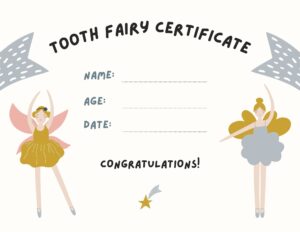Exploring Tooth Fairy Traditions Around the World
Losing a tooth is a significant milestone in a child’s life, and many cultures have developed unique traditions to mark this occasion. While the image of a kind fairy leaving money under a pillow might be familiar, the magic of tooth loss takes surprising forms across the globe!
From Mice to Mice and Money; In Spain and many Latin American countries, children leave their teeth not for a fairy, but for a mouse! El Ratoncito Pérez, a friendly rodent, trades teeth for coins or small gifts. In France, La Petite Souris plays a similar role, while Argentina takes it a step further: some children leave a glass of water for the thirsty Ratón. These mousey tooth fairies add a delightful spin to the tradition, and their stories can ignite children’s imaginations.
Up Up and Away! Some cultures don’t involve mythical creatures at all. In Egypt and Jordan, children hurl their lost teeth skyward, believing it helps ensure strong, healthy replacements. Similarly, children in parts of Africa practice a fascinating dichotomy: upper teeth are thrown onto the roof for growth, while lower teeth are buried in the ground for stability.
In Mongolia, children don’t leave their teeth for fairies or mice, but offer them to dogs. This tradition symbolizes respect for animals and nature’s role in our well-being. In India and Vietnam, some children throw their teeth onto rooftops or bury them in specific locations, reflecting beliefs about tooth spirits and future growth.
We all understand the importance of good oral hygiene habits from a young age. Regardless of local traditions, consider using tooth loss as an opportunity to:
- Emphasize the importance of brushing and flossing to keep new teeth healthy.
- Explain the natural process of tooth replacement and answer any questions young children might have about oral health.
- Celebrate good oral hygiene with stickers, small rewards, or positive reinforcement.

Learning about diverse tooth fairy traditions can be a delightful way to broaden children’s cultural understanding and spark conversations about different customs. As you care for young smiles, remember that the magic of losing a tooth can transcend borders and take many forms. So, the next time a child shares their tooth fairy experience, listen with an open mind and celebrate the unique cultural tapestry this tradition represents!
Do you have any interesting tooth fairy stories from your childhood or cultural background? Share them in the comments below!
